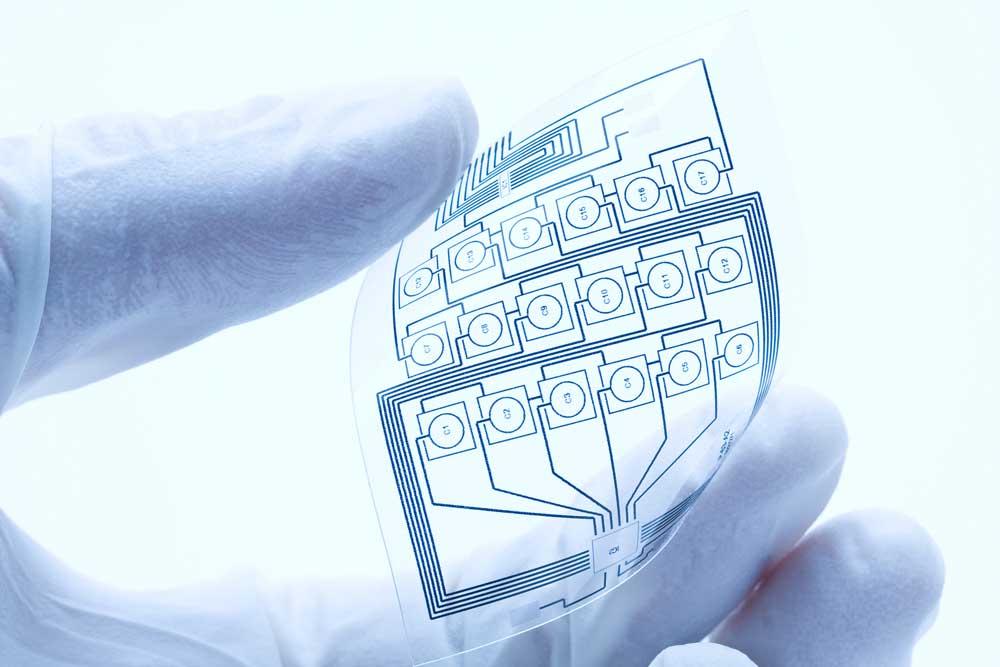Printed Electronics Market Outlook 2035: Shaping the Future of Flexible and Sustainable Technology

The global printed electronics market is undergoing a remarkable transformation. Valued at US$ 15.1 Bn in 2024, the industry is projected to expand at a CAGR of 20.1% from 2025 to 2035, reaching a staggering US$ 107.3 Bn by 2035. This exponential growth underscores how printed electronics are redefining the way electronic components are designed, manufactured, and utilized across industries.
Analysts’ Viewpoint: A New Era in Electronics Manufacturing
Printed electronics is revolutionizing traditional electronics manufacturing by enabling flexible, lightweight, and cost-efficient electronic devices. The technology’s potential extends from smart wearables and healthcare devices to HMI input systems, automotive sensors, and RFID tags. Its ability to combine innovation with sustainability makes it one of the most promising sectors within the electronics landscape.
The major growth drivers include the rising demand for flexible consumer electronics, portable healthcare technologies, and a strong shift toward environmentally friendly manufacturing. As industries embrace sustainability and cost-effectiveness, printed electronics have emerged as a key enabler of next-generation devices.
Printed Electronics Market Introduction
Printed electronics involves the printing of electronic components such as thin-film transistors, sensors, batteries, capacitors, and display panels using specialized inks and substrates. Commonly used printing techniques include:
- Screen printing
- Inkjet printing
- Flexography printing
- Offset printing
- Gravure printing
Each method offers unique advantages. Flexography printing produces ultra-thin layers, while screen printing and inkjet printing achieve higher layer thickness—ideal for stacking multiple layers. Among these, screen printing currently dominates the global market, thanks to its versatility, precision, and scalability.
Market Drivers: Sustainability and Flexibility at the Core
The cost-effectiveness and eco-friendly nature of printed electronics are two of its most powerful growth drivers. Traditional electronics manufacturing often involves complex and resource-intensive processes. In contrast, printed electronics reduces material waste, carbon emissions, and energy consumption, all while supporting biodegradable substrates such as paper and organic polymers.
Moreover, these devices are lightweight, flexible, and versatile, allowing manufacturers to create a broad range of innovative applications — from smart packaging and flexible displays to medical sensors and IoT devices.
For example, in 2023, Komori Corporation established the Printed Electronics Elemental Technology Development Center in Japan, focusing on advanced R&D and technology integration. Such investments demonstrate the growing confidence in printed electronics as a sustainable and scalable solution for future technologies.
Flexibility Driving Market Expansion
One of the defining characteristics of printed electronics is flexibility. Using conductive inks and flexible substrates—like plastics, textiles, and paper—manufacturers can design electronics that bend, roll, and stretch without compromising performance. This property is revolutionizing product design in sectors such as healthcare, automotive, packaging, and consumer electronics.
As the Internet of Things (IoT) and Artificial Intelligence (AI) ecosystems expand, the demand for compact, efficient, and flexible electronics continues to rise. Printed electronics serve as a foundation for these applications, enabling wearable health monitors, smart labels, and connected home devices. The technology represents a shift from rigid to adaptable electronics, paving the way for a more connected and sustainable future.
Screen Printing Leads the Technology Segment
Among the various printing techniques, screen printing commands the largest share of the global printed electronics market. It’s widely used for manufacturing sensors, circuits, and displays due to its high precision and uniform ink layer control. The process offers excellent pattern accuracy and layer consistency, both crucial for the reliable performance of electronic devices.
Furthermore, screen printing ensures low material wastage and is easily scalable for mass production, making it a cost-effective choice for large-scale electronic manufacturing.
Regional Outlook: Asia-Pacific Leads Global Growth
The Asia-Pacific (APAC) region stands as the epicenter of printed electronics innovation and production. Countries like China, Japan, and India are leading the charge, supported by strong manufacturing capabilities, rapid industrialization, and increasing investments in R&D.
The region’s dominance is further fueled by government incentives, technological advancements, and demand from key sectors such as automotive, healthcare, and consumer electronics. With robust manufacturing ecosystems and expanding production capacity, APAC is poised to remain the leading region in the global printed electronics landscape throughout the forecast period.
Competitive Landscape and Key Developments
Prominent players shaping the global printed electronics market include:
- Molex, LLC
- BASF
- Nissha Co.
- Samsung Display
- LG Display Co., Ltd.
- NovaCentrix
- E Ink Holdings Inc.
- Agfa-Gevaert Group
- Palo Alto Research Center (PARC)
- DuPont de Nemours Inc.
In April 2025, Naxnova Technologies launched India’s first Flexible Printed Electronics R&D Centre, aiming to revolutionize smart sensors and flexible circuit innovation. Meanwhile, PARC continues to advance research in autonomous systems and advanced sensing technologies, further strengthening the printed electronics ecosystem.
Conclusion
The printed electronics market represents a paradigm shift in how the world approaches electronic design and manufacturing. By merging flexibility, affordability, and environmental responsibility, it’s transforming industries from healthcare to consumer electronics. With a projected market value of US$ 107.3 Bn by 2035, printed electronics are not just shaping the future of devices—they’re defining the next frontier of sustainable innovation.
- Art
- Causes
- Crafts
- Dance
- Drinks
- Film
- Fitness
- Food
- Jogos
- Gardening
- Health
- Início
- Literature
- Music
- Networking
- Outro
- Party
- Religion
- Shopping
- Sports
- Theater
- Wellness


